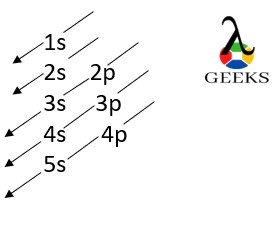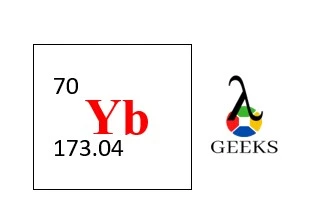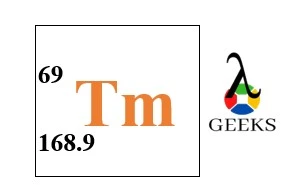In this article, “6+single replacement reaction Example : Detailed Explanations ”, different examples of cationic and anionic single replacement reactions with detailed explanations are discussed briefly.
A chemical reaction in which one element replaces with another element in a compound is called a single replacement reaction. The general representation of a single replacement reaction is as follows. A + BC ➝ A + BC
Let us see of cationic and anionic single replacement reaction examples
- Zn[s] + 2 HCl [aq] ➝ ZnCl2[aq] +H2 [g]
- 2K + 2H2O ➝ 2 KOH + H2
- Cu + 2 AgNO3 ➝ 2 Ag + Cu [NO3]2
- Ca + 2 H2O ➝ Ca [OH]2 + H2
- Cl2 + 2 NaBr ➝ 2 NaCl + Br2
- Br2(g) + NaI(aq) ➝ 2NaBr(aq) + I2(g)
- Br2 + 2 KI ➝ 2 KBr + I2
In single replacement reaction elements that form cation are always replaced with cation and the element that forms an anion can replace with an anion.
1.Cationic single replacement reaction examples
Usually, in cationic replacement reaction the cation is a metal.
- Zn[s] + 2 HCl [aq] ➝ ZnCl2[aq] +H2 [g]
- 2K + 2H2O ➝ 2 KOH + H2
- Cu + 2 AgNO3 ➝ 2 Ag + Cu [NO3]2
- Ca + 2 H2O ➝ Ca [OH]2 + H2
2. Anionic single replacement examples
In anionic 6+ replacement reaction generally halogens are used (chlorine, bromine, iodine)
- Cl2 + 2 NaBr ➝ 2 NaCl + Br2
- Br2(g) + NaI(aq) ➝ 2NaBr(aq) + I2(g)
- Br2 + 2 KI ➝ 2 KBr + I2
Cationic single Replacement Reaction Examples
In this reaction zinc is a highly reactive metal it replaces hydrogen from hydrochloric acid by oxidation itself and reduces hydrogen cation to form zinc chloride.
- Zn(s) + 2HCl(aq) ➝ ZnCl2 + H2
- Zn + HCl ➝ Zn+Cl + H0
- Zn+Cl + HCl + H0 ➝ ZnCl2 + H2(g)
In the below reaction, calcium is highly reactive than hydrogen. It replaces hydrogen from water by oxidation itself to form calcium hydroxide
- Ca(s) + H2O ➝ Ca (OH)2 + H2(g)
- Ca + H2O ➝ Ca+(OH) + H0
- Ca+(OH) + H0 + H2O ➝ Ca (OH)2 + H2
In this reaction, iron is highly reactive than copper. It replaces copper from copper sulphate and undergoes self-oxidation also copper cation reduces to form ferrous sulphate.
- Fe(s) + CuSO4(aq) ➝ FeSO4 + Cu(s)
In the below reaction, zinc is more reactive than silver hence zinc replaces silver from silver nitrate by self-oxidation and silver cation reduces to form zinc nitrate.
- Zn(s) + AgNO3(aq) ➝ 2 Ag(s) + Zn (NO3)2(aq)
- Zn + AgNO3 ➝ Zn+NO3 + Ag0
- Zn+NO3 + Ag0 + AgNO3 ➝ Zn (NO3)2+ 2Ag0
Anion single Replacement Reaction Examples
In the below reaction chlorine is more reactive it replaces bromine from sodium bromide and undergoes a reduction also bromide ion oxidizes to form sodium chloride
- Cl2(g) + NaBr(aq) ➝ 2NaCl(aq) + Br2(g)
- Cl2 + NaBr ➝ NaCl + Br– + Cl0
- NaCl + Br– + Cl0 + NaBr ➝ 2NaCl + Br2
In the below reaction, bromine is highly reactive it replaces iodine from sodium iodide by reduction and undergoes oxidation of iodide anion to form sodium bromide
- Br2 + NaI ➝ NaBr + Br– + I0
- NaBr + Br– + I0 + NaI ➝ 2NaBr+ I2
In this reaction, bromine is more reactive than iodine hence it replaces iodine from potassium iodide by reduction and undergo oxidation of iodide anion to form potassium bromide.
- Br2(g) + 2KI (aq) ➝ 2KBr(aq) + I2(g)
- Br2 + KI ➝ KBr + Br– + I0
- KBr + Br– + I0 + KI ➝ 2KBr+ I2
For anion replacement, the reactivity series for the halogens is F2 > Cl2 > Br2 > I2. Elements having higher reactivity replace those with lower reactivity elements in single replacement reaction. Elements with lower reactivity do not replace with a higher reactive element so no reaction occurs.

Frequently Asked Questions-
How do you determine an single displacement reaction?
Answer :In the product of 6+ single replacement reaction if in the reactant pure element is halogen it replaces with another halogen in the compound. Also, if the cation is present in the reactant it replaces with cation in the compound.
What are the two types of single replacement reactions?
Answer: Two types of 6+ single replacement reactions are, 1.Cationic Replacement Usually, in cationic 6+ replacement the cation is a metal which replaces with another metal. 2.Anionic Replacement In anionic N+ replacement reaction generally halogens are used which are replaced with another halogen.
How to determine the products of single replacement reaction Examples
Ans:In the product of single replacement reaction if in the reactant pure element is halogen it replaces with another halogen in the compound. The oxidation state of halogens are near about the same therefore it’s a simple replacement reaction. If the cation is present in the reactant it replaces with cation in the compound.
What is single replacement reaction with example?
Answer : A chemical reaction in which one element replaces another element in the compound is called single replacement reaction. The general representation of a single replacement reaction is as follows. A+BC ➝ AC + B
Example
- Zn[s] + 2 HCl [aq] ➝ ZnCl2[aq] +H2 [g]
- Cl2 + 2 NaBr ➝ 2 NaCl + Br2



